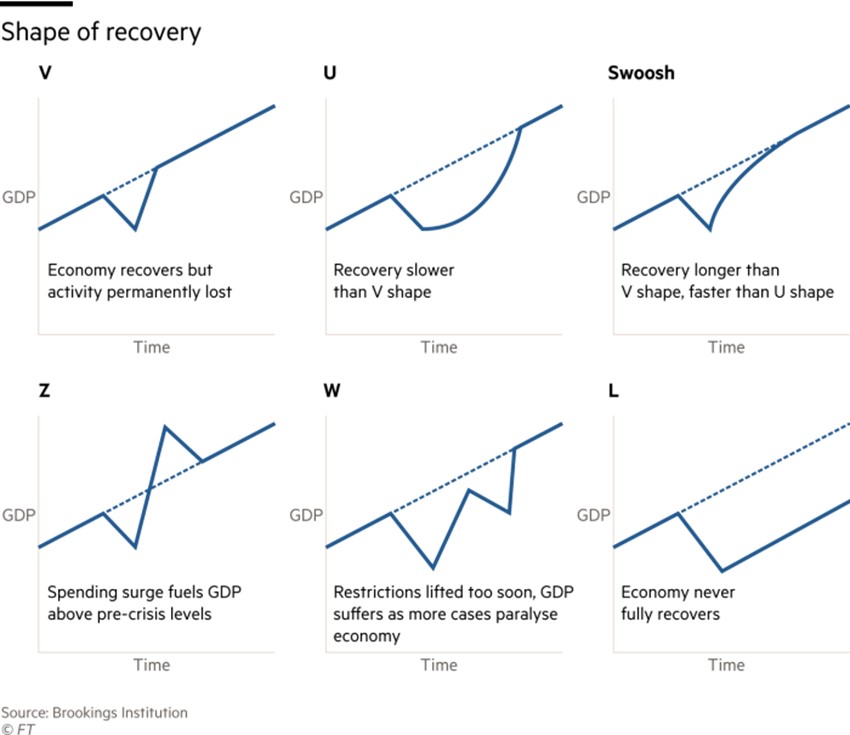K-shaped recovery
2021 JAN 14
Preliminary >
Economic Development > Miscellaneous > Miscellaneous
Why in news?
- Chief India Economist at JP Morgan said that the prospects of a K-shaped recovery from COVID are increasing both in India and across the world.
What is a K-shaped recovery?
- A K-shaped recovery happens when different sections of an economy recover at starkly different rates.
- “Households at the top of the pyramid are likely to have seen their in- comes largely protected, and savings rates forced up during the lockdown, increasing ‘fuel in the tank’ to drive future consumption.
- Meanwhile, households at the bottom are likely to have witnessed permanent hits to jobs and incomes,” he states.
Other Types of Recovery:
- L- Shaped Recovery: An L-shaped recession or depression occurs when an economy has a severe recession and does not return to trend line growth for many years, if ever. The steep drop or degrowth, is followed by a flat line makes the shape of an L.
- V-Shaped recovery: In a V-shaped recovery, the economy suffers a sharp but brief period of economic decline with a clearly defined trough, followed by a strong recovery. V-shapes are the normal shape for a recession, as the strength of the economic recovery is typically closely related to the severity of the preceding recession.
- U-Shaped recovery: A U-shaped recovery happens when recession is longer than a V-shaped recession and has a less-clearly defined trough. GDP may shrink for several quarters, and only slowly return to trend growth.
- W- Shaped recovery: In a W-shaped recovery, the economy falls into recession, recovers with a short period of growth, then falls back into recession before finally recovering, giving a "down up down up" pattern resembling the letter W.
- Z-shaped recovery: It is the most optimistic scenario. The economy bounces back quickly after an economic slowdown due to pent-up demand.

PRELIMS QUESTION
Consider the following statements:
1.During an economic recession, governments tend to spend more to stimulate the economy.
2.Indian economy has never been in a recession in terms of yearly GDP growth before 2020.
Which of the statements given above is/are correct?
(a)1 only
(b)2 only
(c)Both 1 and 2
(d)Neither 1 nor 2
Answer to Prelims Question
